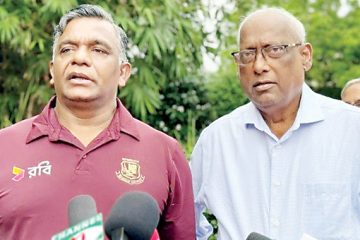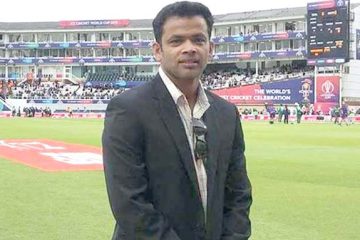Bangladesh showed in an 87-run opening day defeat to co-hosts India that they have plenty of talented batsmen but the lack of a cutting edge with the ball could make this a long, tough World Cup for them in the field.
Saturday’s match in the Bangladesh capital will be remembered for the home fans’ carnival beforehand, India opener Virender Sehwag’s majestic 175 – and a dreadful decision to insert the visitors on a dream batting pitch by Sakib al Hasan.
If the Bangladesh skipper had a potent mixture of seam and spin at his disposal, that decision might have made some sense. But since he does not have it, India simply feasted on his nervous attack on their way to a huge 370-4.
Bangladesh, in retrospect, only had one chance against the tournament favourites and that was to post their own serious batting total first and hope India would crumble under the pressure of the occasion and a fanatical Dhaka crowd.
Sakib may have blundered but a more worrying long-term concern for him is his attack which looks short of class. Bangladesh are needed to improve their attack to worry England, West Indies or South Africa in Group B as they will probably need to beat one of the sides to progress further in the tournament.
‘Bowling-wise of course I am not too happy,’ Sakib said.
‘There are so many things that we can improve. We fielded well and also executed our plan in our batting.
‘One area we can improve obviously is our bowling. Our fast bowlers need to bowl in the right areas more often.
‘We bowled too many boundary balls and we have to cut it down.’
In the absence of injured paceman Mashrafee bin Murtaza, Bangladesh had pinned their hopes on Shafiul Islam and Rubel Hossain, but they both were treated ruthlessly by the Indian batsmen.
The Indians were particularly harsh on Shafiul, who conceded 69 runs in his seven overs.
Shafiul, the most consistent fast bowler for Bangladesh in 2010 with 32 wickets in 23 matches, did well in two warm-up matches against Canada and Pakistan which raised the expectations.
But when he came to bowl the first over of the tournament, he looked extremely nervous and he could not overcome this problem throughout the game.
Sehwag dispatched his first ball through the covers for a boundary which set the tone of the game.
‘Perhaps he got a bit nervous but more than that he was not getting his rhythm,’ Sakib said of Shafiul.
‘The wicket was very good to bat on and their batsmen were so good that there was very little chance to get away bowling loose balls.’
Another area of concern for Bangladesh was the discretionary batting powerplay session – when all but three fielders must remain inside the inner ring – which Sakib said they did not use properly.
Bangladesh scored only 30 runs and lost three wickets during their phase of batting powerplay.
They opted to take it in the 42nd over of their innings when the result was all but decided with their asking run-rate already around double figures.
‘The wicket was very good to bat on and we all executed our plans while batting,’ he said.
‘But I think we could have done better during the phase of batting powerplay.’
Sakib could solve this problem simply by introducing it when powerplay could still make a difference to his team.
All in all, there is plenty for the Bangladesh skipper to ponder before their next match against Ireland on Feb 25.




















